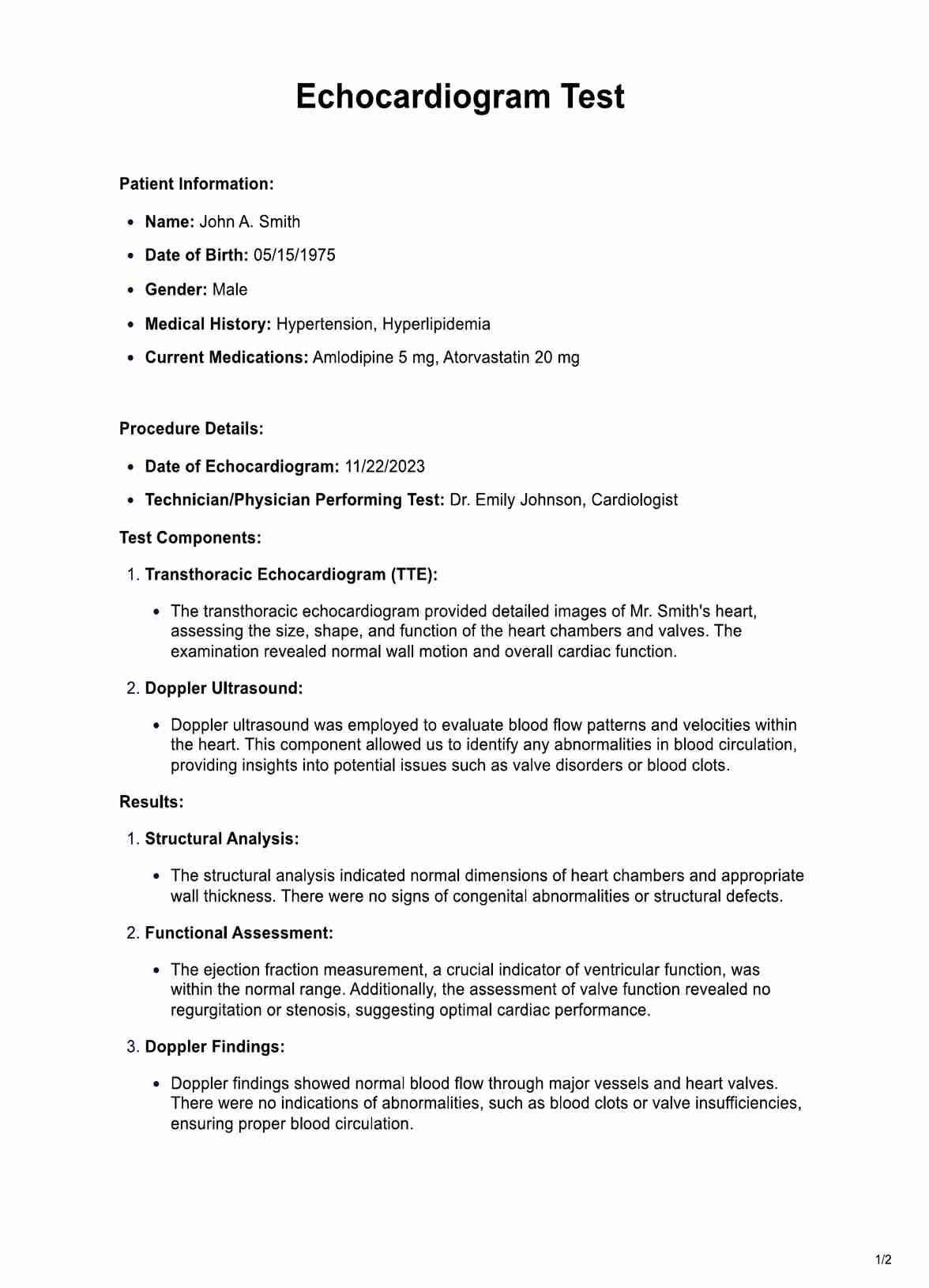Echocardiograms assess the heart's size, shape, and function. They help diagnose and monitor conditions such as heart valve diseases, congenital heart defects, and heart failure.

Echocardiogram
Experience comprehensive cardiovascular insight with an Echocardiogram Blood Test, a non-invasive procedure providing crucial heart health information.
Use Template
Echocardiogram Template
Commonly asked questions
During the test, a transducer is placed on the chest, emitting sound waves that bounce off the heart's walls and valves. The echoes create real-time images on a monitor, allowing healthcare practitioners to evaluate various aspects of cardiac health.
No, the Echocardiogram Test is painless. It is a non-invasive procedure that does not involve needles or surgery. The transducer is simply placed on the chest to capture images.
EHR and practice management software
Get started for free
*No credit card required
Free
$0/usd
Unlimited clients
Telehealth
1GB of storage
Client portal text
Automated billing and online payments











